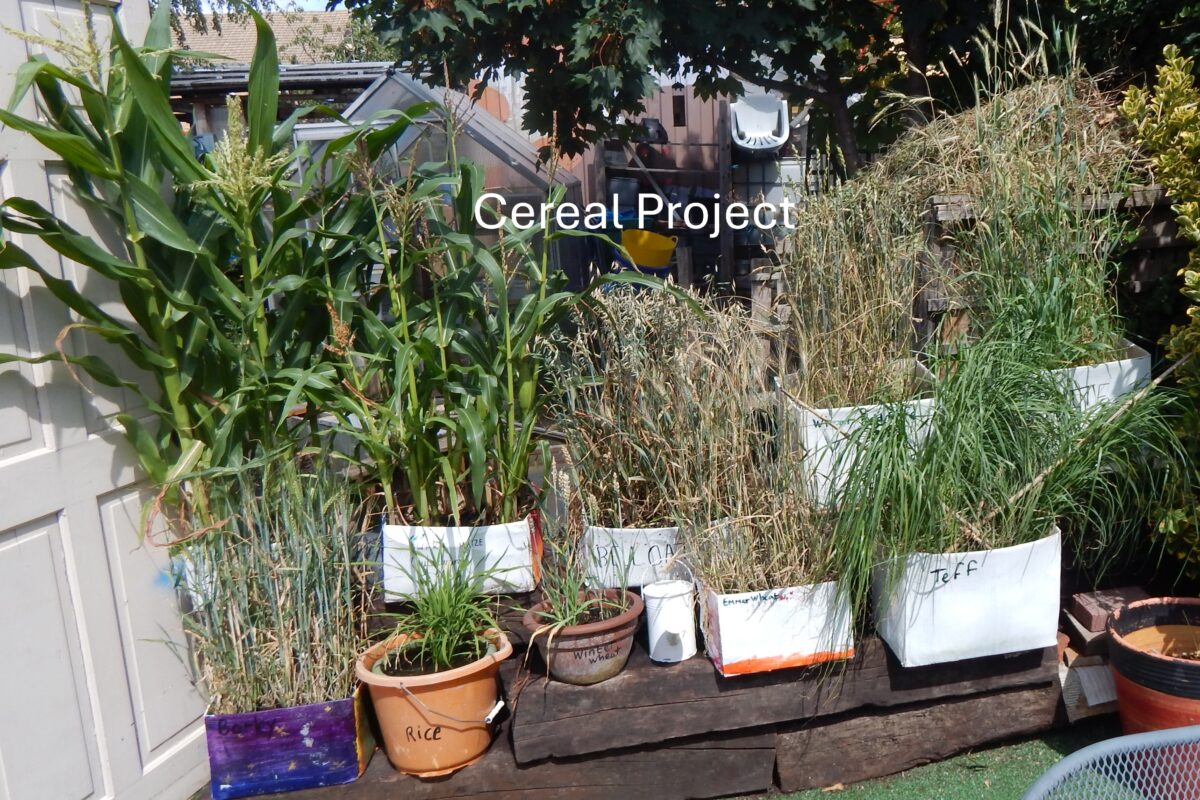So little rain this month. All our rain barrels are empty. Our sole source of water is our tap on the standpipe. I have been keeping track of rainfall with our rain gauge, hardly arduous this month. Throughout August, we have had 4mm of rain, while the average rainfall in London for August is 48mm. This is drought. Farmers are telling us of poor yields for cereals and vegetables, and consequently higher prices. We don’t quite pray for rain, but scour the forecasts for any possibility.
Last Saturday Cas had a birthday party in the garden and a fund raiser for Sudan where she was born. Sudan is suffering an awful civil war. There have been very high casualty rates amongst civilians, and starvation has followed in the wake of people fleeing the fighting. How awful we can be to each other.
On a quieter note, at the party, I spotted teff on the menu. I know it from the Cereal Project we did in 2020. It is a cereal grown in Sudan and Ethiopia. I was amazed how tiny the seeds were on the sample we grew. Its flour goes into many foods, as well as being made into a flat bread.
We were given our seeds for the Cereal Project from two sources. From Living Fields, part of the James Hutton Institute based in Dundee. They supplied seeds for: emmer wheat, two barleys, oats and rye. Emmer wheat is fascinating, dating back to the dawn of agriculture in the Fertile Crescent, 11,000 years ago in the Middle East. You would expect barley from a Scottish source as it is used in making whiskey, and the oats for porridge, we associate with Scotland. A good selection, but some gaps, for example no modern wheat.
I contacted an old friend who runs Prairie Garden Seeds in Saskatchewan, Canada. He sent me: a multi coloured maize, Bell oats, White Rye, the afore mentioned teff, and Red Fife Wheat. I bought sweetcorn seeds from Smallholders and rice on line from Jungle Seeds.
Red Fife Wheat though is not a modern wheat. It was popular in Canada upto 1900 when it was replaced by bigger croppers. So no modern wheat even with these additions. And then I found some growing in the garden. It was under a bird seed holder. Obviously from the birdseed mix, spilled by the birds and some had germinated. So I dug a cluster up, potted it, and added it to the project, surmising it was most likely a winter wheat. That’s one that is sown in the autumn to be an earlier crop the following year.
We planted the seeds in cardboard boxes which we were given by the library. I did a little research on this and found that others had used such boxes. They would last a year, which was long enough for the project.
I thought we should have rice as it is such a popular cereal in India and China. I had a lot of trouble growing it. My first seedlings died after a few weeks, but I managed to get a single seed growing on. As it grew bigger I made a miniature paddy field for it. The rice was in a large flower pot, which I put in a bucket of water, renewing the water every few days. It grew very bushy and about two feet high, but there were no seeds. If the summer had been warmer, I suspect we would have got some. All the rest cropped, except the rice.
I was pleased with the cereal project. It looked good, growing on sleeper platforms in cardboard boxes, from seedlings to mature plants (bar rice). But sadly the garden was closed for much of the time as this was a covid year. The project was written up in the a book, The Cereal Project, and we had dibond plaques telling about the cereals, their use and history. But few people saw it, beyond garden volunteers. So this is a reminder.
The photo shows:
Top Row: maize (sweet corn), maize (multi-coloured), Bell oats, Red Fife Wheat, White Rye
Bottom Row: barley, rice, winter wheat, emmer wheat, teff

